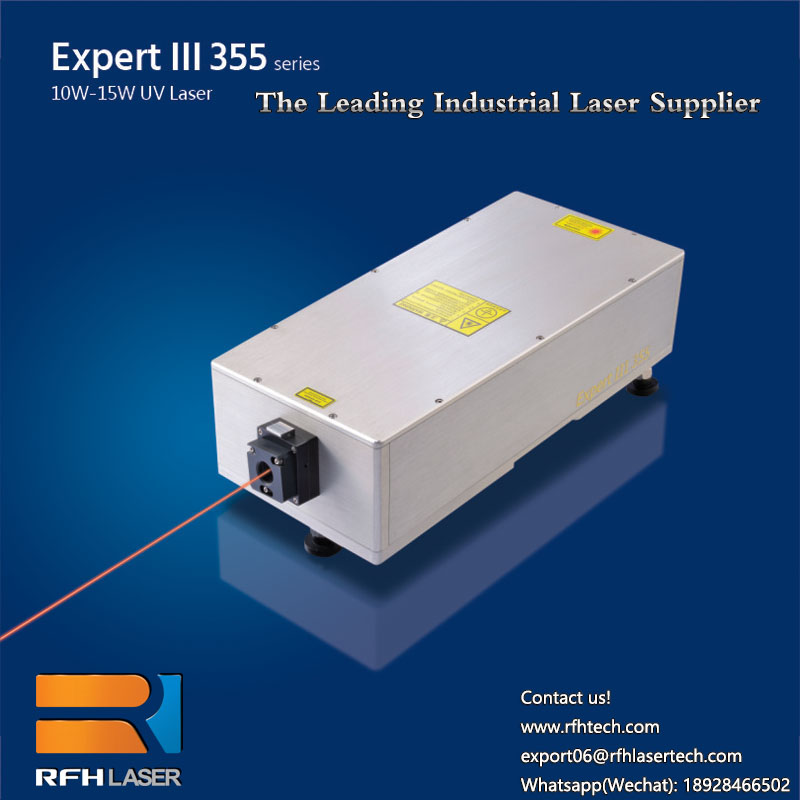The wavelength of UV laser light is around one-third (355 nm) of that of standard wavelength lasers (1064 nm)
Apr 30 , 2021UV Laser Marking
On this page, we explain marking examples and characteristics of UV laser markers, which are perfect for applications that require clear colour marking or marking with minimal damage to products.

Applications
Mechanism and Characteristics of UV Lasers
Applications
The wavelength of UV laser light is around one-third (355 nm) of that of standard wavelength lasers (1064 nm). The name “UV laser marker” comes from its wavelength being in the ultraviolet portion of the light spectrum.
Marking using these lasers is called "Cold Marking," which refers to how they can perform marking and processing with minimal heat damage due to their incredibly high absorption rate on a variety of materials. UV laser marking is ideal for applications that require high contrast or minimal product damage.
Light wavelength distribution map
Applications
A Ultraviolet range B Visible range C Infrared range
Multicolour automotive relays
Multicolour automotive relays
Earbuds
Earbuds
Chemical bottles
Chemical bottles
Copper lead frames
Copper lead frames
Steel tools (scissors, etc.)
Steel tools (scissors, etc.)
Food packaging film
Food packaging film
Download the PDF
for complete details
Mechanism and Characteristics of UV Lasers
The wavelength of a UV laser is one-third that of standard wavelength lasers, and thus UV lasers are also referred to as third-harmonic generation (THG) lasers. By passing a standard wavelength laser with a wavelength of 1064 nm through a non-linear crystal, the wavelength is reduced to 532 nm. This is further passed through another crystal, effectively reducing its wavelength to 355 nm.
Mechanism and Characteristics of UV Lasers
A 1064 nm standard wavelength B 532 nm green wavelength C 355 nm UV wavelength
Feature: High-contrast marking
Compared with standard wavelength lasers (IR/1064 nm) and green lasers (SHG/532 nm), UV lasers generally have a remarkably higher material absorption rate, which enables efficient absorption of emitted light by the marking surface. This means the power does not need to be increased to create highly visible marks.
Absorption rates for various resin materials
Absorption rates for various resin materials
* The values are for reference only and do not account for surface reflectivity.
Marking comparison
In-vehicle plastic part
[Material: Natural Polyamide]
Conventional model
Conventional model
UV laser
UV laser
Plastic Tube
[Material: Silicon]
Conventional model
Conventional model
UV laser
UV laser
Power switch cover
[Material: Urea formaldehyde white]
Conventional model
Conventional model
UV laser
UV laser
Gas meter casing
(with red marking surface)
Conventional model
Conventional model
UV laser
UV laser
Feature: Damage-free marking
Marking with UV lasers takes advantage of high absorption rates even with gold, silver, copper, and other materials with high reflectance, ensuring minimal heat damage. This minimises soot and burrs while also preventing damage to the surface, so corrosion-resistant marking and processing is possible.
Light absorption rate for metal
Light absorption rate for metal
Marking on IC package
Standard wavelength laser
Standard wavelength laser
UV laser
UV laser
A Sealing resin B Chip
The size of electronic parts has steadily decreased over the years, and the sealing resin has also become steadily thinner. With standard wavelength lasers, damage to internal components caused by energy being transmitted through the sealing resin has become a real concern. The high material absorption rate offered by UV lasers reduces the chance of that energy being transmitted to internal components.
Marking comparison
Marking with reduced thermal damage
(silver-plated surface)
Conventional model
Conventional model
UV laser
UV laser
Cutting with reduced thermal damage
(PCB)
Conventional model
Conventional model
UV laser
UV laser
Marking with reduced rear surface damage
(transfusion bag film)
Convention model (Left: Front, Right: Back)
Convention model
(Left: Front, Right: Back)
UV laser (Left: Front, Right: Back)
UV laser
(Left: Front, Right: Back)
Marking with reduced engraving
(IC package)
Conventional model
Conventional model
UV laser
UV laser